Table of Contents
- What Makes a Great TV Pilot?
- 10. The Marvelous Mrs. Maisel: Pilot
- 9. Fleabag: Episode 1
- 8. The Mary Tyler Moore Show: Love Is All Around
- 7. The Good Place: Everything Is Fine
- 6. The Handmaid’s Tale: Offred
- 5. Atlanta: The Big Bang
- 4. Better Call Saul: Uno
- 3. Breaking Bad: Pilot
- 2. Arrested Development: Pilot
- 1. Cheers: Give Me a Ring Sometime
- Premise in a TV Pilot
- Characters in a TV Pilot
- Format/Structure of a TV Pilot
- Outlining a TV Pilot
- Writing a TV Pilot
- In Summary
What Makes a Great TV Pilot?
Understanding the importance, function and objective of a TV pilot are the first steps to writing a great one.
The difference between a failed pilot and a successful one is the potential outcome of the entire series. Sure, there have been less than perfect pilots that go on to be wildly popular series, i.e. Pretty Little Liars. Or well-written pilots that get cancelled after a single season, i.e. Freaks and Geeks.
The truth is, your series won’t even make it into a pitch session, let alone onto the small screen, if your pilot falls short in any way. To help relieve some of that added pressure, let’s go over some essentials your pilot needs.
The TV pilot is the introduction to a series. First and foremost, it should introduce the audience to a new world and the characters that inhabit it. Secondly, it should set up character relationships and their personal wants/needs. It should establish the pace, tone and stakes of the forthcoming series and, most importantly, leave the audience wanting more.
The question is, how do you implement these elements in the most effective way possible? Well, the best way to learn is to look at how some of the greatest TV pilots successfully kicked off their series. These are TV pilots that not only got their series’ off the ground but also stand up as brilliant episodes of television in their own right.
10. The Marvelous Mrs. Maisel: Pilot
In Amy Sherman-Palladino’s The Marvelous Mrs. Maisel, Rachel Brosnahan plays the perfect 1950’s housewife, who comes from a wealthy Jewish family from New York’s Upper West Side.
The pilot begins on Midge Maisel’s wedding day where we get the first glimpse of her natural performative humor with her speech. Fast forward four years and the Maisels’ perfect marriage seems as strong as ever. Except it’s not. Midge’s husband leaves her for his pencil-pushing assistant and life as she knows it falls apart.
In a drunken state, Midge stumbles on stage and shows off her full-blown talent as a stand-up comedian. This is the Midge that viewers want to tune in for every episode. On the surface, she has it all, but after the inciting incident of her husband leaving her, her lavish lifestyle seems deeply flawed.
The realistic world of 1950’s New York is set up right away with the vintage, authentic costuming and the richly detailed and lavish setting. All the characters have defined personalities that make for dynamic relationships and entertaining interactions. Midge wants to fit in the nuclear family mould, but she needs to follow the journey that her newly found talent might take her.
The pilot for this series shows how to balance contrast and expectations. We find Midge in a certain place in her life, only for that certainty to be upended. How is she going to react? The end of the pilot leaves the story in a very contrasting place to how it was at the beginning. Midge’s expectations have been upended and we await to see how she will react.
9. Fleabag: Episode 1
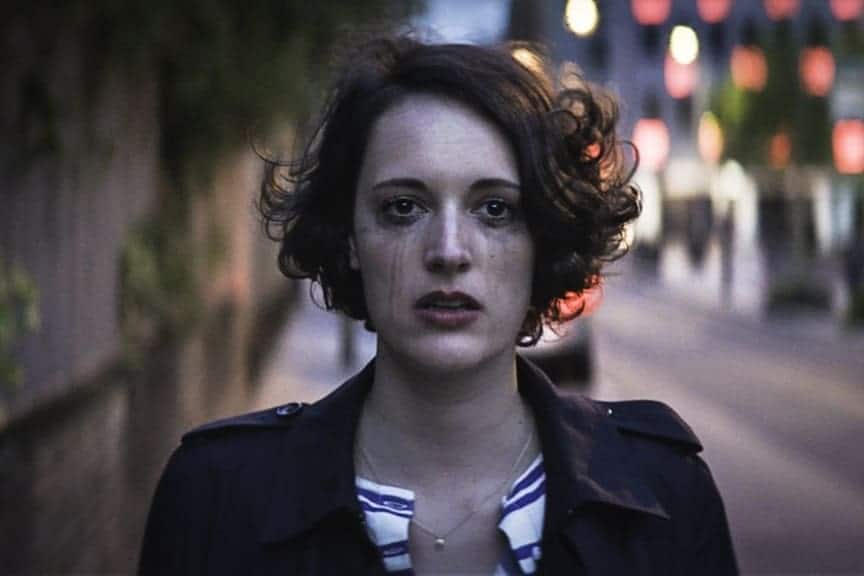
Creator and star of Fleabag, Phoebe Waller-Bridge, gives us a series about a charming and cynical thirty-something navigating her life. The show has been praised for its original use of the age-old technique of breaking the fourth wall. And this device is introduced right away in the pilot, setting the tone for the entire series.
Fleabag uses her eye contact and comments to the camera as a way to invite the audience in. Her perspective is the story. She is the narrator of her own life and this is her world that we’re peeking into. The audience only sees as much as she allows. We only learn more about the truth when she loses control of situations.
Fleabag’s life is a tragedy disguised as a comedy. Not only does the tragedy come from the big reveal at the end (no spoilers), but it comes from the problems she inflicts on herself. Fleabag’s actions show that she isn’t necessarily a good person. However, the fourth wall breaks make her character feel personal and therefore likeable.
The pilot is great at introducing us to the patterns that will make up the series and make it so unique and entertaining. Fleabag knows its idiosyncratic language and that language is made abundantly clear in the opening episode.
It’s a series that doesn’t just use fourth wall breaks as an added stylistic quirk. Instead, the series itself is a kind of interrogation of the fourth wall break, in hilarious terms.
8. The Mary Tyler Moore Show: Love Is All Around
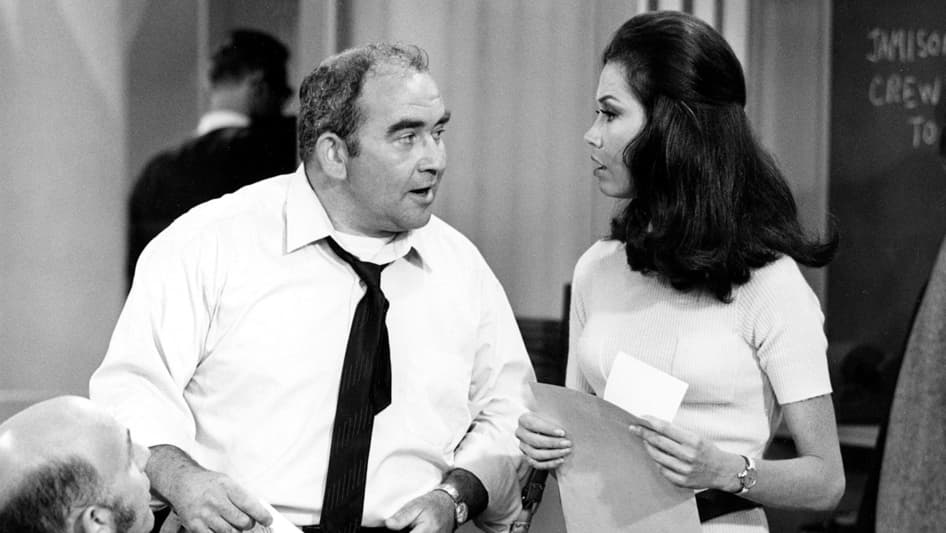
Mary Tyler Moore stars in the 1970’s self-titled sitcom, The Mary Tyler Moore Show. As you can tell from the previous two examples, the premise of a thirty-something woman navigating her life has been told time and time again. But The Mary Tyler Moore Show was one of the firsts of its kind.
The pilot embarked on new territory that hadn’t been seen on TV before. The premise of the series centers on a single woman in her thirties whose focus is developing in her new career as an associate producer for the Minneapolis news station. The thought of a woman putting her career before a man was relatively unheralded for its time.
The pilot’s progressive subject matter and characters set the tone for the series and gave it a higher purpose. Never before had a sitcom approached radical issues in a humorous and authentic way. This pilot shows how to start a series boldly and clearly, putting the show’s intentions at the forefront of its content.
7. The Good Place: Everything Is Fine
Michael Schur’s The Good Place is a sitcom that takes place in a reimagined afterlife. Eleanor Shellstrop finds herself in the Good Place by mistake. Eleanor determines to stay in the Good Place despite her awful behavior during her lifetime. She uses the help of her assigned soul mate and professor of ethics and moral philosophy, Chidi Anagonye.
A premise like this requires a lot of exposition since it takes place in a made-up world. The pilot does an excellent job of providing this exposition in a humorous and entertaining way. It’s a great example of how to navigate needing to provide exposition but doing so in such a dynamic and entertaining way that the audience almost forgets.
The pilot starts with the meeting with Eleanor and the architect of the Good Place neighbourhood, Michael, where both Eleanor and the audience are filled in on what’s happening. The welcome presentation provides even more information. The twist is revealed that Eleanor shouldn’t be there when she confesses to Chidi.
The writers know the premise is intriguing and that it preys on most audiences’ desire to imagine an afterlife. The audience has many questions and the pilot does a brilliant job of both seeking to answer those questions and leaving many unanswered.
6. The Handmaid’s Tale: Offred
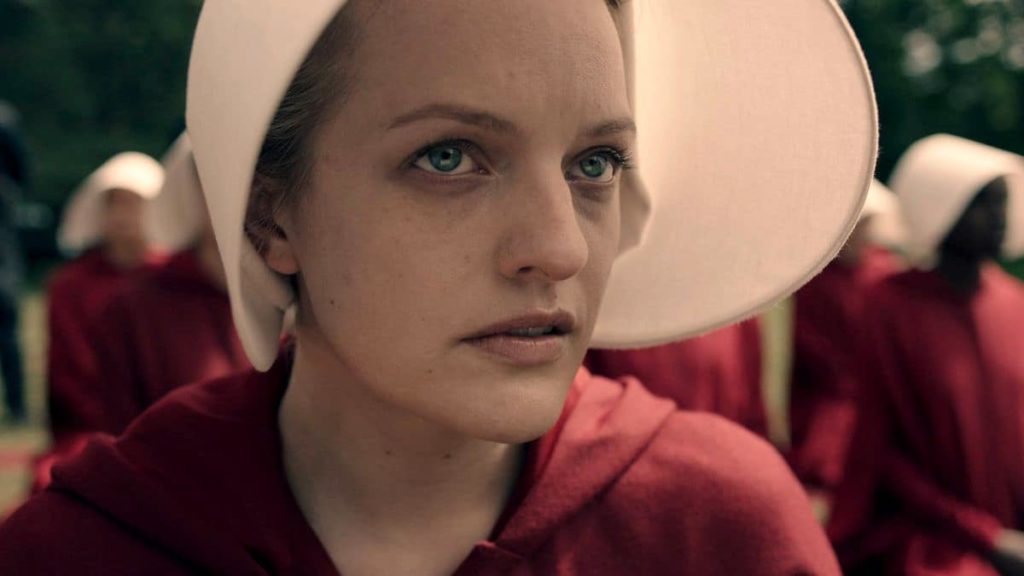
The Hulu series, The Handmaid’s Tale, was adapted from the 1985 novel of the same name. The story tells of a dystopian totalitarian society, where women are enslaved and turned into the property of men.
The pilot follows the main character, Offred (formerly known as June). We see the world from her point of view and how it affects her and those around her.
Again, setting up a world like this requires a lot of exposition. The pilot uses flashbacks and narration in a gripping way to get this information across. Although the women are all stripped of any personality or individuality, we still get a sense of whom Offred is (and who June used to be) from her narration.
The subject matter is dark and painful to watch yet it’s hard to look away. Watching the characters fight for their survival is a haunting experience because of the realistic portrayal of the world around them.
The Handmaid’s Tale pilot shows how to immerse an audience in a particular character’s perspective. We understand from the start that this is Offred’s story. Even the name of the episode highlights this. With such a daunting premise and context, it’s vital that we have an intimate way in.
5. Atlanta: The Big Bang

Donald Glover creates and stars in the comedy-drama series, Atlanta. As the title suggests, the series is based in Atlanta, where cousins Earn and Alfred try to break into the rap scene. The pilot uses a blend of humor and social commentary that continues throughout the entire series.
The realness of the social commentary and the absurdness of the humor makes for a balanced story. The authentic portrayal of Atlanta sets the tone for the series.
It’s a look into a culture that many have never experienced yet, is familiar to so many. The characters are real, their situations are real, but it’s told in a surrealist way.
Most of all, the view on this world is made abundantly clear in the pilot. Earn casts a wry eye on all the absurdity around him. This is where the surrealism stems from. Earl is a fish out of water in his own environment and this dynamic is where the series draws so much of the comedy, tone and story from.
4. Better Call Saul: Uno
Vince Gilligan’s Breaking Bad spinoff, Better Call Saul, lives up to its predecessor’s meticulous storytelling craft. The pilot plays with time in a way that gives the audience a better understanding of who the main character, Jimmy McGill, is and who he will become.
It starts with Jimmy in the future following what happens to him after the Breaking Bad series. We jump back to Jimmy before Saul Goodman was ever created. He’s a struggling lawyer who ultimately tries to do the right thing. Whether you’ve seen Breaking Bad or not, the foreshadowing of his future shows that a drastic change is destined to come.
The pilot sets up the ongoing shift in morality that Jimmy faces the entire series. When a couple of skateboarders try to scam Jimmy with a staged accident, Jimmy quickly figures out what they’re trying to pull over on him. He offers some advice on how to perfect their scam and uses them to try to seal the deal with a client.
Everything goes wrong when the skateboarders scam the wrong woman and end up in serious danger. Although Jimmy’s morally corrupt behavior got them all there in the first place, in the following episode, he tries to use his skills as a lawyer to get them out of a tough situation.
This is just the first of many instances where Jimmy is put in situations like this. Ultimately, he slowly develops into the con artist that is Saul Goodman. The pilot brilliantly demonstrates, in a simple way, the dynamics that make Saul who he is. It gives him a situation to react to and in that reaction, his character is revealed.
3. Breaking Bad: Pilot
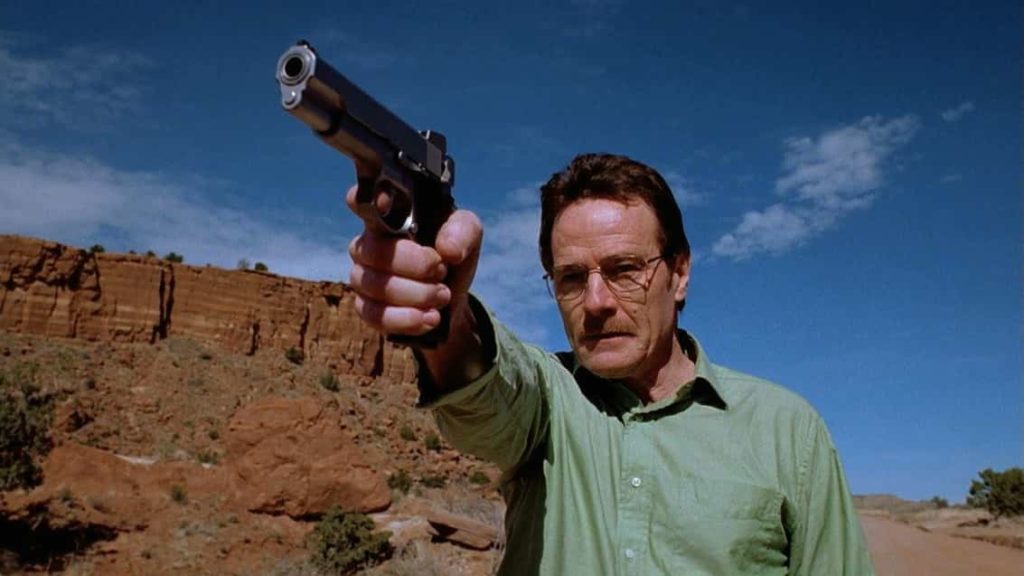
The pilot of Vince Gilligan’s Breaking Bad shares similarities to the creation of the Better Call Saul pilot. Both series take place within the same world, but at different times with different characters. By the end of the series, both characters are foreshadowed to undergo a significant change in character.
The pilot kicks off the notable series in an intense sequence of action and suspense. It raises questions that keep the audience watching for answers. It’s set up that Walter White is an underdog in his life. When he discovers he has fatal lung cancer, he has nothing to lose so he sets out to make money in the meth business.
Now that the premise is set up the audience can witness how it affects his character development. We all know by now the strength of Breaking Bad‘s core premise – Chemistry teacher is diagnosed with lung cancer and turns to making meth to pay the bills. The pilot is a great example of a show fulfilling the potential of that premise.
We’re immediately thrown into incongruous and exciting action, trying to do the maths as to how a man like this ended up in a situation like this.
2. Arrested Development: Pilot
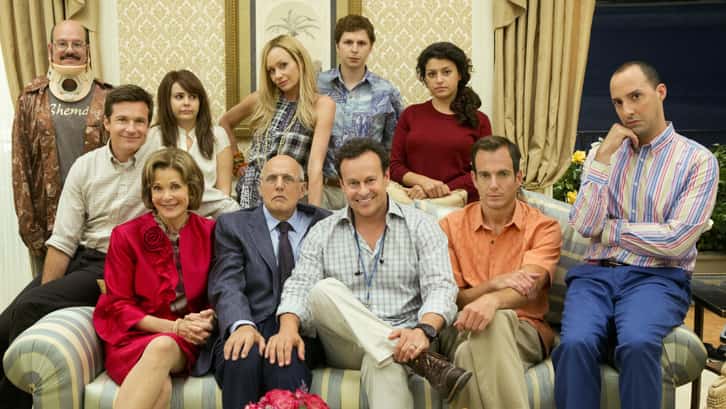
Arrested Development is a sitcom that follows the dysfunctional Bluths family as straight-man, Michael Bluth, tries to run the family real estate business. We get a feel for who the family is in the opening at the father’s retirement party. The narration also lends a hand in introducing this ensemble of ‘over the top’ characters.
The pilot sets up the quirky tone and deadpan humor and the relationships between the characters make for an intriguing and unconventional pilot. The plot points for the series are set up all within the twenty-minute pilot. In short, the viewers know exactly what they’re in for.
The Arrested Development pilot shows how to bring together a host of unconventional and idiosyncratic characters all at once. When you think of how loud and unique each character is, introducing them all at once seems a daunting prospect. But by putting them together at a party, the show can hit all the birds it needs to with one stone. The traits that define each character are well introduced, as are the strange dynamics between them that make the series so funny.
1. Cheers: Give Me a Ring Sometime
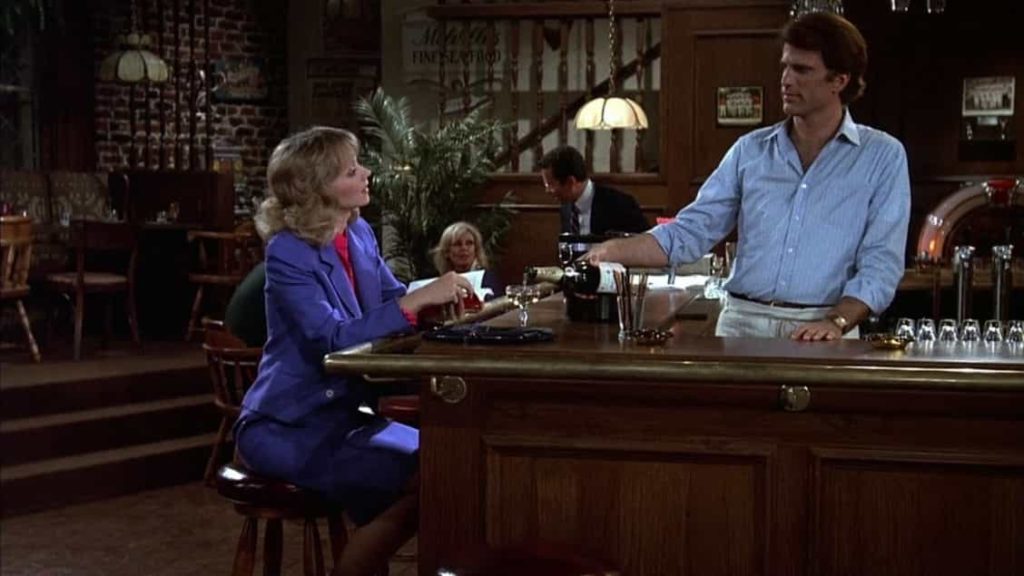
One of the greatest pilots of all time, Cheers acts as the perfect set up to a series in a formulaic and entertaining way. Diane Chambers finds herself working at a bar after her fiance leaves her.
The entire pilot takes place within the Cheers bar. A location that proves itself to be worthy of an entertaining premise. A place where everybody knows your name. Uniquely, each character has a distinct personality. Their interactions are humorous and heartwarming, like a makeshift family.
Right away, the relationship between Sam and Diane is set up and is used as a plot point throughout the show. They’re complete opposites, making for an interesting dynamic.
The Cheers pilot illustrates how to set up location as a core element to a series. We instantly feel like this bar is a familiar place and one in which we can imagine spending an entire series. This aspect is vitally important for a sitcom.
But it could also be applied to a drama series. Ultimately, we want to feel intimate with the surroundings the story take place in. It’s a place to want to return to, a place we feel is a home away from home.
Now, let’s break down how to apply these elements when starting from scratch…
Premise in a TV Pilot
Every series starts with a premise. A premise for a TV show must be able to sustain for multiple seasons. The goal is to keep the series running for as long as possible without sacrificing quality. Think of the premises of your favorite TV shows.
- A quirky teacher moves into a Los Angeles loft with three single guys (New Girl).
- A dysfunctional family fights for control of their global media empire (Succession).
- Two 20-something best friends try to navigate life in New York City (Broad City).
- A British intelligence investigator is tasked with capturing a psychopathic assassin (Killing Eve).
- The world of New York’s most prestigious ad agencies at the beginning of the 1960s, focusing on one of the firm’s most mysterious but extremely talented ad executives (Mad Men).
These vague yet intriguing premises entice viewers with the idea of a new world and interesting characters. The premise is the overarching idea of the series. The episodes themselves dive into more detailed stories that pave the way for ongoing plot points as well as character and story arcs.
So, the pilot acts as not only the introduction but also as a promise to the viewer that this is what to expect from future episodes. No matter the format (more details below), something new should be happening every episode that keeps the promise of the premise and more importantly keeps the audience coming back.
Characters in a TV Pilot

Just as important as the premise is the characters. The premise won’t have legs to stand on if the characters are lacking in development. Who is the audience tuning in to watch every episode and why should they care? The pilot is the perfect opportunity to set up who the main character(s) is (are) and their relationships with all secondary characters.
Give insight into who they are by connecting their wants and needs to the premise. Do this by showing not telling.
In New Girl, Jess’s world falls apart when she discovers her long-time boyfriend is cheating on her. This drives her to move in with three male strangers. From all the mood swings, we can see that Jess wants to find love again to mend her broken heart. However, as she bonds with her roommates, we can see that her need lies in her newfound support system.
Your characters’ wants and needs can vary by episode or they can stay consistent throughout the series. Either way, they must always be working towards overcoming something, with an obstacle in their way.
It’s common for TV characters to stay stuck in their ways, unlike in film where characters are expected to have some sort of major arc or change. In TV, situations change, but characters often stay the same. This is because if characters change too much and get what they want, the show ends.
If a character does undergo a significant arc, it must be earned. A writer can earn this change by using the character’s justifiable actions to lead them to their arc. It’s done gradually over time and doesn’t break the initial promise set up in the pilot for what an audience is to expect from the series.
Format/Structure of a TV Pilot
Generally, television is split between half-hour or hour-long run times. Which run time best suits your series will depend on the story you’re trying to tell. The typical half-hour comedy and hour-long drama formula no longer applies. If your comedy takes an hour to tell its story, by all means, take an hour.
When it comes to genre, choosing one may come naturally based on the idea. However, experimenting with different elements from multiple genres can bring something new to your story.
Also, consider if you’re going to tell your story as an episodic, serial or anthology series.
A series is episodic if an episode can be watched without prior knowledge of the previous episode. They operate as stand alones that present a new conflict every episode that may or may not be resolved at the end. Sitcoms are the perfect example of an episodic series. Nevertheless, don’t limit your idea to what’s already been done before.
Maybe your comedy’s plot line works better over the span of the entire season. Consider making it a serial series where each episode progresses the story forward. Or an anthology series where each episode consists of all-new characters and storylines, like sketch comedy shows or the technological dystopian series, Black Mirror.
Choosing a format should enhance the viewing experience depending on the specific idea.
Still unsure exactly which angle to approach your series from? Breaking down your pilot into a beat sheet may uncover the answers to your problems.
Outlining a TV Pilot
There’s always a lot to consider when starting a new project. It can be overwhelming, but before even beginning to write, outline your pilot by breaking down the beats of the story. Author, Robert McKee’s definition of a screenwriting beat is as follows:
“An exchange of behavior in action/reaction. Beat by beat these changing behaviors shape the turning of a scene.”
Robert McKee, Story
Multiple beats make up a single scene. Feel free to break down your story in a way that works best for you. In fact, the more detailed, the better understanding you’ll have to develop your story even further.
Starting an outline can be one of the hardest parts of the writing process. The beginning/teaser is going to be what draws the audience in. This can manifest in a number of different ways. Remember that your TV pilot should start with a change in your main character’s world that initiates their objective.
In Succession‘s pilot, Logan Roy reveals he won’t be stepping down as CEO of Waystar RoyCo and will instead give the position to his third wife after his death. Therefore, this leads to the rest of the family’s objective of fighting for control of the company.
From there, each beat should connect to the next.
You’ll constantly be reworking your outline before you take it to the page so just see where your writing takes you. If you’re happy with how the storylines progress throughout the acts and how your characters develop then it might be time to start your first draft.
Writing a TV Pilot
You’ve done all you can to prepare yourself for this moment. You’ve read every article on the subject, your outline is complete and you know all the ins and outs of your story.
While it’s important to understand the basic formula of writing a TV pilot, don’t let the rule book weigh you down. Tap into the excitement and purpose behind the idea. Write what you want to see on TV.
Find what’s missing from your small screen and add something to it that only you could write. Above all, that’s how you’ll write the next great TV pilot.
In Summary
10. The Marvelous Mrs Maisel
9. Fleabag
8. The Mary Tyler Moore Show
7. The Good Place
6. The Handmaid’s Tale
5. Atlanta
4. Better Call Saul
3. Breaking Bad
2. Arrested Development
1. Cheers
The pilot acts as not only the introduction but also as a promise to the viewer that this is what to expect from future episodes. No matter the format, something new should be happening every episode that keeps the promise of the premise.
In a TV pilot the characters must be robust. They must have clearly defined characteristics to fall back on and a dynamic with one another that has legs for an entire series. The audience has to imagine how the characters might be forced to change and they must understand what the characters want and what is standing in the way of these wants. This must all be apparent in the pilot.
Consider if your story should be told as episodic, serial or anthology series. This will speak to the purpose of your story and the genre to which it belongs to. Interrogate the theme behind your story and your overall intention for it. This will lead you to the appropriate structure.
- What did you think of this article? Share It, Like It, give it a rating, and let us know your thoughts in the comments box further down…
- Struggling with a script or book? Story analysis is what we do, all day, every day… check out our range of script coverage services for writers & filmmakers.
This article was written by Madison Kemeny and edited by IS Staff.
Get *ALL* our FREE Resources
Tackle the trickiest areas of screenwriting with our exclusive eBooks. Get all our FREE resources when you join 60,000 filmmakers on our mailing list!

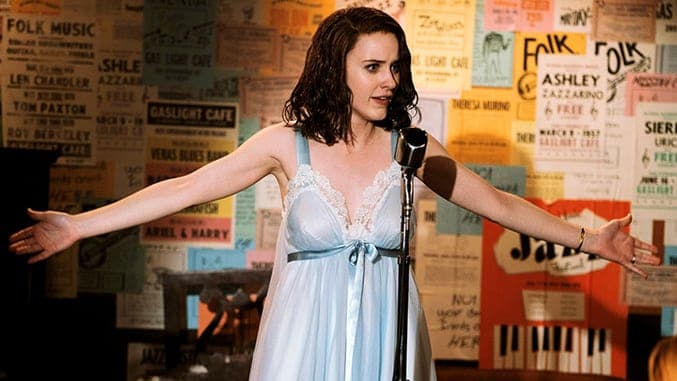
Im glad I finally signed up
Just wanted to say Hi!
I agree that the pilot for The Marvelous Mrs. Maisel is amazing. However, structurally it really puzzles me . The inciting incident (her husband leaving her) happens around minute 30 in the pilot — page 45 of the script.This happens pretty late’ in the show. Joel leaving is both the inciting incident and the All Is Lost moment. She also doesn’t face any real conflict until then, not hers anyway. Much of the action revolves around Joel and his stand up– then when he decides to leave her, the switch is flipped and we begin to understand what the show will be about. We meet the Midge that we will be following. As much as I love watching Midge, I’m not sure what her goal in the pilot is. To be the best damn wife out there? Is the structure a little loose because its streaming?
You’re correct. I’ll do my best to explain by take on it. The character IS the show so it breaks some of the typical rules. It works for TMMM because the writing is fast paced and the character development is so key to investing the viewer in the show and sets up a great deal for future episodes. We also KNOW a bit where it’s going (she’s going to be a stand-up) before ever seeing the show. The creator is also know for overwriting in terms of pages. It’s a good example of how breaking the conventional structure rules can pay off. It’s one of the benefits of being an established writer. It’s much easier to break the rules if you have a green light on a series.
Thank you this article was incredibly helpful and I am ready to begin.
Most welcome!